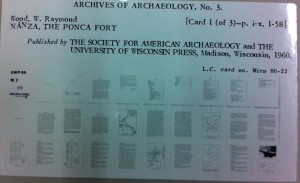You’ve probably been warned by popular media that tomorrow brings the “Maya Apocalypse,” a prophesied end-of-days. Indeed, the 21st of December, 2012, marks the end of an important cycle in the Maya Long Count Calendar—but there is no evidence suggesting pre-Hispanic Maya predicted any doom-and-gloom to befall us on this day. In fact, there is only one known text that makes mention of this date! We know the Maya world was ordered by their many intricate calendar systems, of which the long count calendar was just one. tDAR holds a large number of interesting documents and projects providing in-depth coverage on numerous aspects of Maya life.
- Learn more about the origins of the Maya Calendar
- Read about the longest surviving Maya text
- How the maya managed water control in the face of climate change
- Investigate the central ceremonial precinct of the Blue Creek site, a middle Pre-Classic through Terminal Classic period Maya center in northwest Belize.
Do you have archaeological information you’d like to contribute to tDAR? Now is a great time as we will continue to offer free uploads to tDAR through the end of the year. Once in tDAR your files are preserved for the long term so users today and well into the future can access and make use of them. At Digital Antiquity we regularly and systematically check the files in the tDAR repository to ensure that no deterioration has occurred. If file deterioration is detected, take steps to remedy it. We periodically migrate and/or refresh the digital files to provide for their long-term accessibility and preservation. Your files are maintained in open and preferable formats, and associated with rich descriptive metadata that make them meaningful. What are you waiting for?
